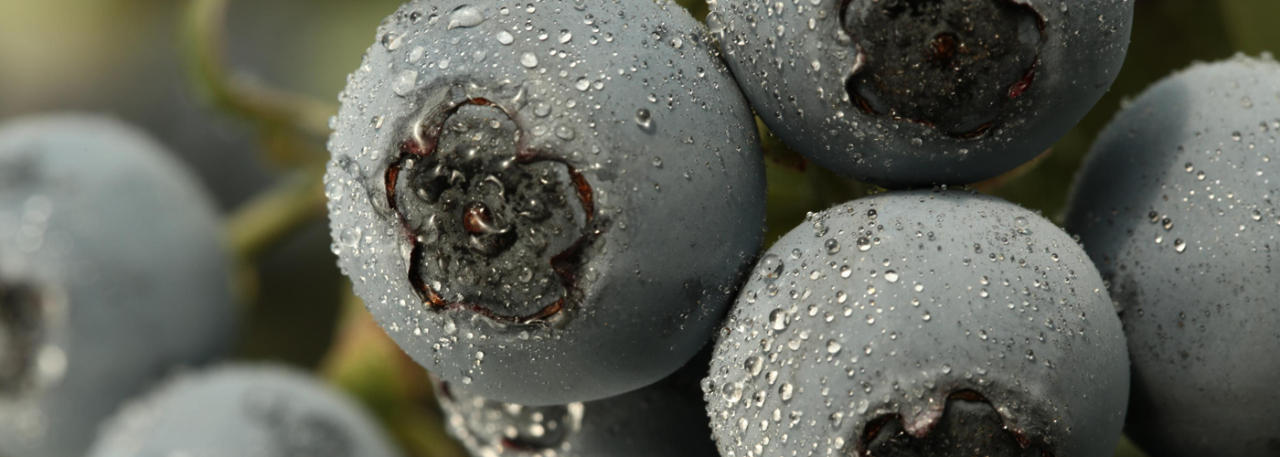.png.transform/rendition-xs/image_image%20(1).png)
Blackberries, blueberries and raspberries
The most commonly cultivated fruits of the forest in Spain are blueberries (ruit of Ericaceae Vaccinium sp., a small shrub with a height of about 0.2 – 0.4 m.), blackberries (the commercial cultivated variety comes from a shrub with climbing habit, spiny branches and a pentagonal section which can grow up to 3 m in height. This shrub belongs to the Rubus genus, Rosaceae family) and raspberries (fruit of Rubus idaeus, a shrub with a height of between 40 and 60 cm. The flowers grow in racemes and are small and white. The raspberry fruit is a multiple drupe).
Tasting notes
- Blackberry: Intense purple color and a taste ranging from tart to sweet. Small fruit, either rounded or slightly elongated, formed by small globules which contain a minute seed on the interior. The length varies between 1.5 and 2 cm.
- Raspberry: Reddish pink color, with a combination of sweetness and slight acidity. The skin is velvety, bright red and covered with a fine down which can be perceived during tasting. There are also yellow, white and black varieties. The pulp is fleshy, juicy and has a bittersweet taste, and is very aromatic and sweet smelling.
- Blueberry: Blue coloring with a slightly sweet taste, which may be more or less pronounced depending on the variety. It is similar in size to an olive, between 7 and 12 mm in diameter. It turns black when it reaches maximum ripeness, or red depending on the variety. It is coated in a bluish bloom or a thick film with varying degrees of resistance.
Other notes
The favourable climate of Spain helps to produce full flavoured succulent berries, which are ideal for a healthy snack and perfect for keeping those hunger pangs at bay. The Spanish growers work to high standards to ensure the berries are bursting with flavour and goodness and now with new means of production, the fruit is the best it has ever been.
Production / Processing method
Encouraged by the light sandy soil and warm Spanish climate, blackberries, blueberries and raspberries can be grown high up on ridges. Their roots are then warmed by the sun to produce healthy and delicious fresh fruit. Huelva’s Mediterranean climate is also ideal for the cultivation of juicy blueberries and blackberries.
Geography / Relief and climate
The main cultivation area for berries in Spain is concentrated in the province of Huelva (Andalusia). It is also found in Jerte Valley (Extremadura).
The ideal soil and climate conditions and the supply of good-quality water in the southern part of Huelva have led to a boom in this type of crop. This fact, plus a high degree of technification, distribution structures and commercial dynamism, has transformed the strawberry into the province's main crop.
Encouraged by the light sandy soil and warm Spanish climate, berries can be grown high up on ridges. Their roots are then warmed by the sun to produce healthy and delicious fresh fruit. Huelva’s Mediterranean climate is ideal for its cultivation.
The province has a subtropical Mediterranean climate, classified as warm and temperate, more continental towards the north and with maritime influences along the coast. The average annual temperature is 18°C / 64.4ºF and the monthly averages range from between 25°C / 77ºF for the hottest month and 11°C / 51.8º F for the coldest. Minimum temperatures rarely fall below 0ºC / 32ºF, thereby guaranteeing an almost total absence of frosts. Huelva has over 3,000 hours of sunlight a year, which makes it, together with Almería, the province with the highest rate of annual insolation on the Spanish Peninsula.
Huelva’s Mediterranean climate is also ideal for the cultivation of juicy blueberries and blackberries.

